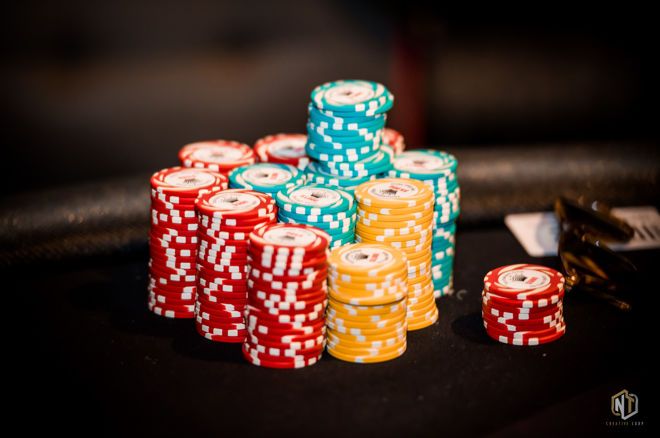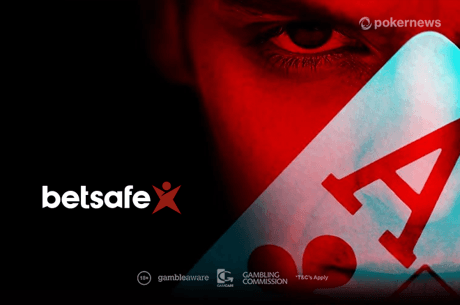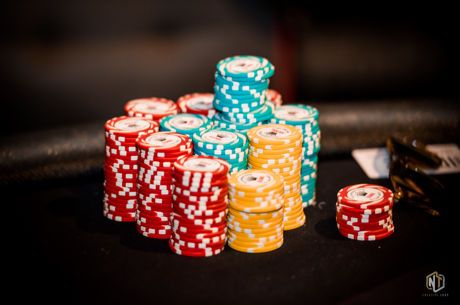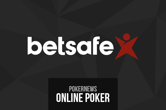Learn the ABCs of Cash Game Strategy: How to Size Your Bets

Table Of Contents
It��s pretty easy to stick to an ABC tight-aggressive cash game strategy preflop. Preflop it��s all about your position and hole cards; postflop is where the action happens though and where you��re going to win or lose the majority of your money.
Earn up to 30% cash back by making it to Diamond Tier
Pot Size
If you think about bets in terms of big blinds preflop, it��s all about the size of the pot postflop. It��s important to keep a handle on the size of the pot so you can work out your pot odds �C the odds you��re being offered by the pot to call.
- If the pot is $100 and your opponent bets $50, your pot odds are 150/50 or 3/1.
- If the pot is $100 and your opponent bets $10, your pot odds are 110/10 or 11/1.
Once you know your pot odds, work out your equity by taking your number of outs and multiplying by four with two cards to come or two with just one card to come. This isn��t exact but it��s close enough.
Continuation Betting
The c-bet has become almost obligatory in today��s game. The theory is good but you should be aware of why you��re doing it and remember that c-betting as a bluff works much better on dry boards.
Saying that, it��s an essential part of a tight-aggressive strategy and it��s critical you don��t just c-bet your strong hands or your opponents will suss you out pretty quickly.
Why Do You Need To Know Pot Odds?
So you know whether it��s correct to call with a draw.You��ve got Ah-8h on a 6h-2h-Jc board and nine outs to make your flush. 9x2 gives you an 18% chance of making it on the next card. As a ratio that��s roughly 80/20 or 4/1. If you��re being offered bigger pot odds you��re getting the right price to call. (As this is ABC strategy we don��t really want to get into implied odds here. Implied odds take into account the fact that you can win more from your opponent if you hit.)
So you can charge your opponent the wrong price to call. Say it��s your opponent who has the flush draw. Your bet should be big enough to ensure he��s getting the wrong price to call. If the pot is $100 and you bet $50, the pot odds are 3/1, less than the 4/1 he needs to make a correct call.
So you know whether to call with a hand you��re not sure is going to be good. If you��ve got a marginal hand you can use pot odds to work out whether you should call. If you��ve got middle pair and the pot odds are 10/1, you only need to be right one in 11 times to break even.
The Turn
The turn can be tricky. There��s still another card and a round of betting to come, and the bet sizes are ramping up. If you detect weakness from your opponent you should take advantage of it now. If your opponent c-bets the flop and checks the turn, bet.
If you have a marginal hand, exercise caution. Flopping top pair, decent kicker is great, but if your opponent gets sticky and goes to war on the turn, your hand is not that big. Checking lets you control the pot.
If you��ve got a monster try to position yourself to play for stacks on the river. Look at the stacks in play and work out a decent bet that could lead to you maximizing your value. It doesn��t need to pay off every time to be the right move.
The River
All the cards are out now so your hand is either winning or losing. Have you got the strongest hand? Bet it for value and if you think your opponent has a strong hand too don��t be afraid to go for the max.
Have you got the worst hand but think you might be able to get your opponent to lay his down? Bet to try and get him to fold. This could be an expensive mistake though so if you��re not sure err on the side of caution.
If you��ve got a marginal hand check it and hope your opponent checks behind. It��s unlikely your opponent will call with worse. If your opponent bets and you��ve got a decision to make, consult your pot odds again. If it��s a cheap call you don��t need to be right that often to make it profitable.
PokerNews readers can enjoy a massive first deposit bonus when they sign up for a poker account at Betsafe
What If Your Opponent Bets?
If you don��t have anything and you haven��t got any draws, fold.
If you have a draw, check your pot odds and see if you��re getting the right price to call.
If you��ve got a strong hand you can either call or raise the bet. If you think your opponent is strong you should try to get as much money in the pot as you can. If you don��t think he has much you could call to try and get another street of value.
Why C-Bet?
You keep the betting momentum. You showed strength preflop by raising so you should continue the story. It could win you the pot there and then with a vulnerable hand. Let��s say that you raise preflop with A-K and pick up a single caller in the blinds. The flop comes down J-6-2 and he checks to you. You make a half-pot bet and your opponent folds. You��ve protected your hand and you��ve also avoided showing weakness.
You could get a better hand to fold. In the same hand above your opponent could fold a small pair, which would beat you at showdown.

Remember!
Sticking religiously to an ABC cash game strategy is only likely to be successful at the lower stakes games. However, refreshing your poker fundamentals is important no matter what level you play at. It��s a great foundation and it��s a good way to play if you��re new to a table and have no information on your opponents. It also makes you think about why you��re doing certain things and where you could be making expensive mistakes.
If you want to mix things up a bit, consider adding semi-bluffing to your arsenal by betting or raising your draws. Your opponent might fold giving you the pot there and then, or you could hit your draw on the turn or river.
Download Betsafe Now
Grab yourself up to �2,000 first deposit bonus by downloading Betsafe through PokerNews. Enjoy Twisters, 6+ Hold'em, Speed Poker and more when you play on Betsafe.









